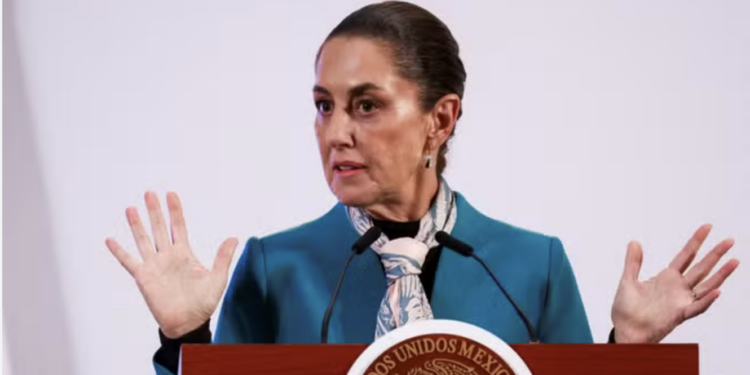Google Under Fire as Mexico Sues Over “Gulf of America” Rename: Trump Declares Victory in Geography

In a move that has historians, cartographers, and reality itself reeling, Mexico has filed a lawsuit against Google for its “geopolitical cartographic innovation,” also known as renaming an ocean inlet because Trump said so.
President Claudia Sheinbaum confirmed this week that the tech behemoth is being dragged into court—location undisclosed, but presumably somewhere between The Hague and Google’s cafeteria—after repeatedly ignoring diplomatic pleas not to rename the Gulf of Mexico as the “Gulf of America” for U.S. users of its Maps service.
“We just want Google to comply with international law, basic geography, and also reality,” Sheinbaum said in a press conference, pausing to breathe deeply into a paper bag.
The renaming was sparked by a Day-One Executive Order from U.S. President Donald Trump, who justified the change by stating, “We do most of the work there. We fish. We drill. We spilled. It’s ours.” He then unveiled a map where the Gulf was labeled “America’s Bathtub.”
Google responded to outrage by explaining the company has a longstanding policy of “just doing whatever the loudest government says,” citing past examples such as “East Sea (also Sea of Japan)” and the infamous temporary renaming of Canada to “America Jr.” in 2024.
“We think our users can handle seeing both names,” a Google spokesperson said. “And if they can’t, we also have a new AI that filters out uncomfortable facts.”
While the Gulf of Mexico remains unchanged for users in Mexico, users in the U.S. now see “Gulf of America,” while international users are treated to the diplomatic train wreck: “Gulf of Mexico (Gulf of America) subject to litigation”.
The Associated Press refused to adopt the new name, prompting the White House to revoke their snack privileges and unfriend them on LinkedIn. A federal judge has since ruled that the First Amendment does, in fact, outrank Trump’s fondness for Sharpie-based cartography.
Not content with renaming one body of water, Trump has now set his sights on the Persian Gulf. During an upcoming visit to Saudi Arabia (sponsored by Aramco), he is expected to announce that the U.S. will begin referring to it as the “Arabian Gulf or Gulf of Arabia or just Gulfy-Wulfy.”
Iran, not amused, issued a stern response: “We hope this is a disinformation campaign. Otherwise, consequences will be metaphysically severe.”
Back home, Sheinbaum is juggling geopolitical absurdity with national sovereignty, having recently rejected Trump’s offer to send U.S. troops into Mexico to fight drug cartels.
“I told him, ‘No, President Trump, our territory is inviolable, and also, we still remember the last time you got military ideas,’” Sheinbaum said, clarifying that U.S. collaboration is welcome as long as it doesn’t come in camouflage and Humvees.
Trump, meanwhile, offered his analysis: “Sheinbaum is a lovely woman. Very smart. Very brave. But too scared to let us help. Sad!”
Despite simmering tensions, experts say the U.S.-Mexico relationship remains “complicated,” “codependent,” and “on the verge of a public breakup via Notes app.”
Trade officials are reportedly considering high-stakes negotiations involving fentanyl seizures, tariffs, and a binding agreement on who gets to name what, where, and when.
As for the Gulf in question, residents along its shores Mexican, Cuban, and American alike report no visible changes in water behavior, except a subtle undertone of existential dread.
“We don’t care what they call it,” said a fisherman from Veracruz. “Just stop spilling oil in it.”
In summary: The sea is salty. Politics are saltier. And Google Maps is apparently powered by whatever Trump yells first.







